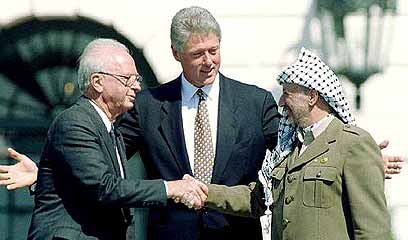1988 The first steps
In September 1988, as the Intifada gathered force, King Hussein of Jordan announced that he no longer sought sovereignty over the “West Bank”. Palestinian representation in the Jordanian Majlis (Parliament) would cease, as would Jordanian payment of public servants in the West Bank area.
The announcement dealt a blow to prospects of a peace settlement on the basis of the “Jordanian option” proposed in the first Part of the Camp David Accords, and seen as essential in both Labour and Likud proposals.
Then, in November 1988 the Palestinian National Council, meeting at Algiers, adopted a resolution calling for an international conference on the basis of Resolutions 242 and 338 and “all other UN resolutions”. It also made a declaration proclaiming a “Palestinian State”, but without defining its boundaries. The conference also renounced terrorism outside Israel.


